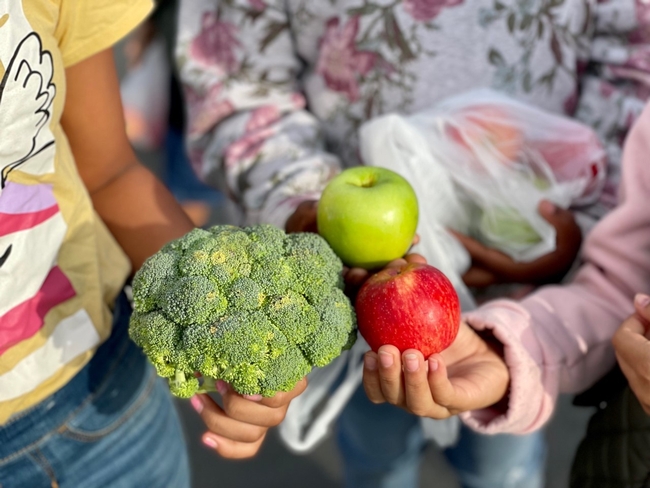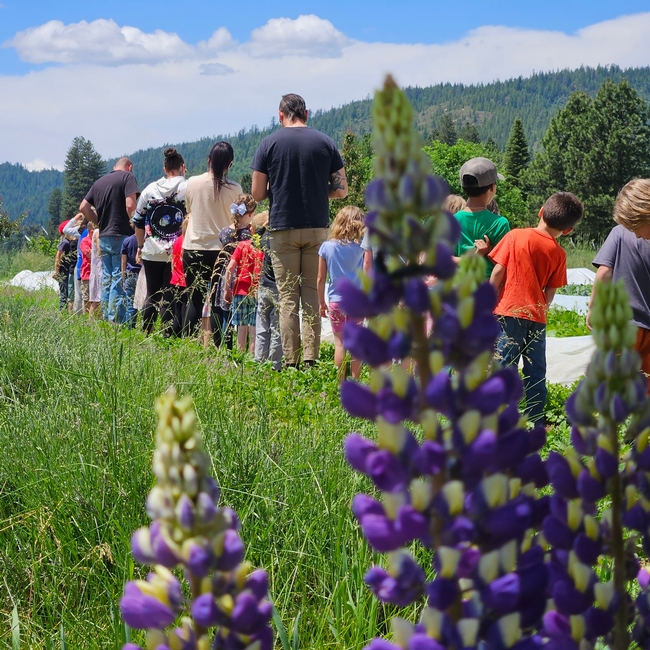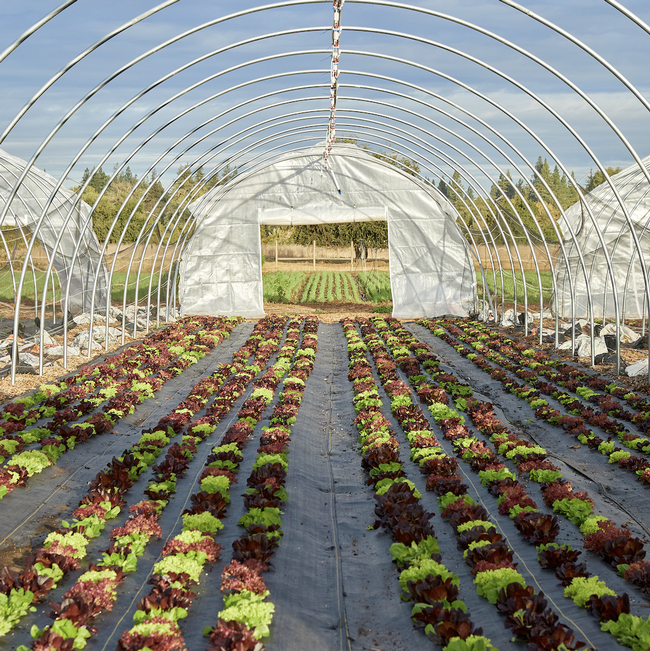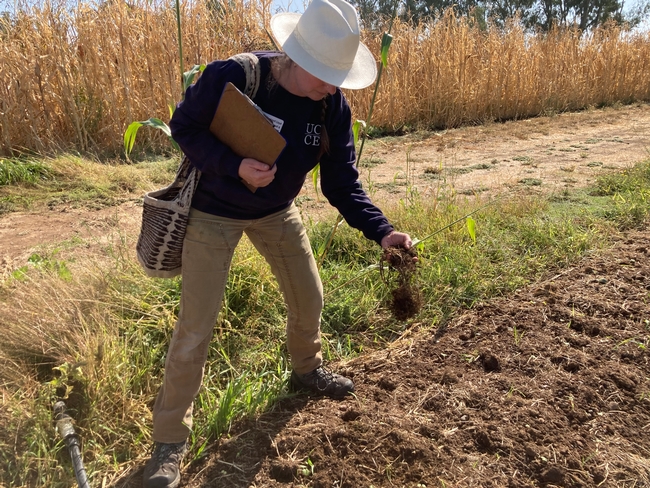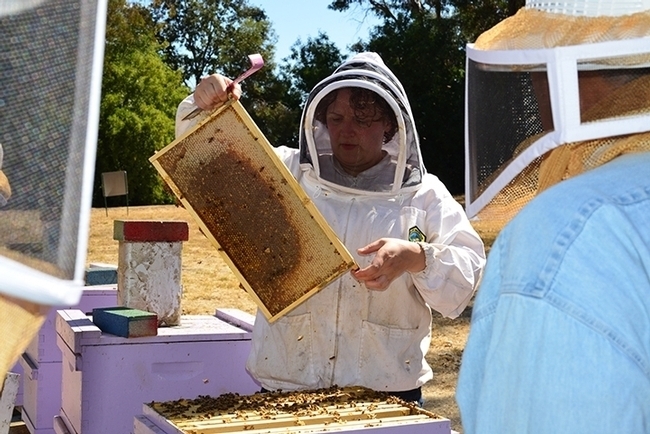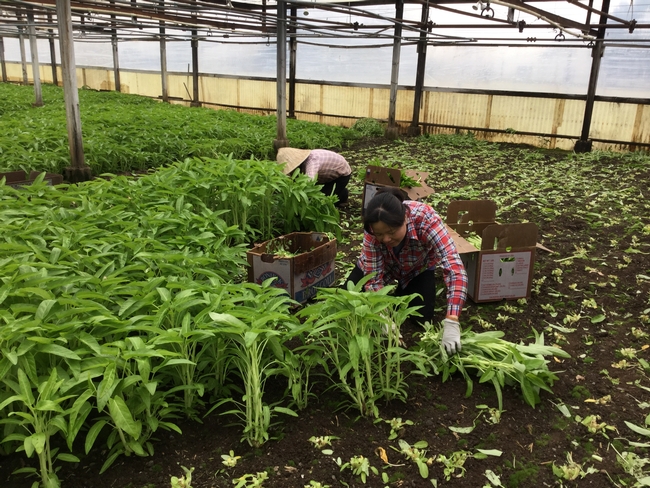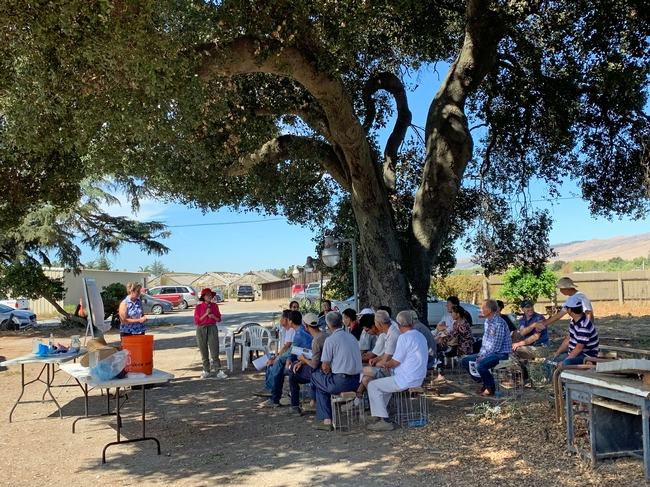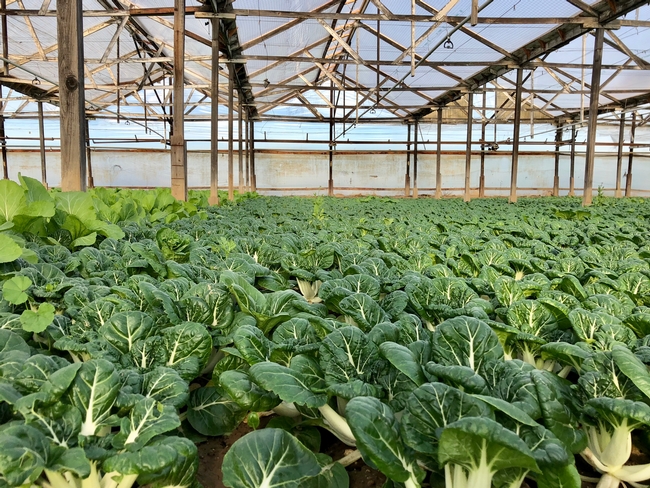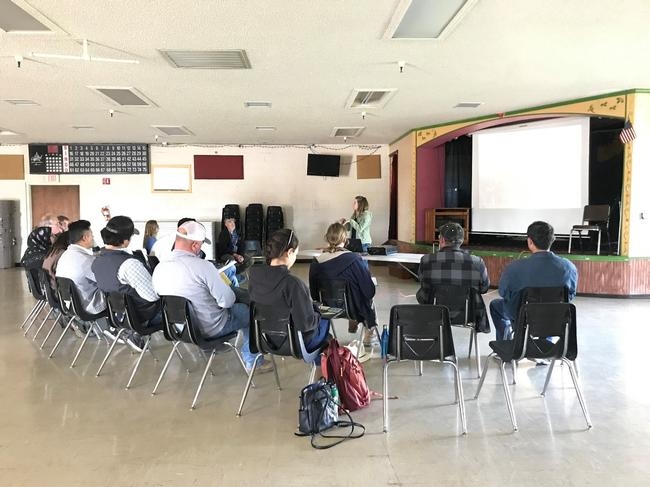
Posts Tagged: Small Farms
Investments in farm-to-school program stabilize farms, expand climate-friendly farming practices
Small and midsize farms, women and BIPOC farmers especially benefit
A new report reveals that California farmers participating in the state's Farm to School Incubator Grant Program are increasing sales of fresh, local and organic produce, meat and dairy products to schools, according to researchers evaluating program impacts. The report found that 57% of the program's farmers made sales to schools between April and September 2023, representing an average of 33% of their total farm revenues. All food producers funded by the Farm to School Grant Program state that they use or plan to use climate-smart agricultural practices in their operations during the grant period.
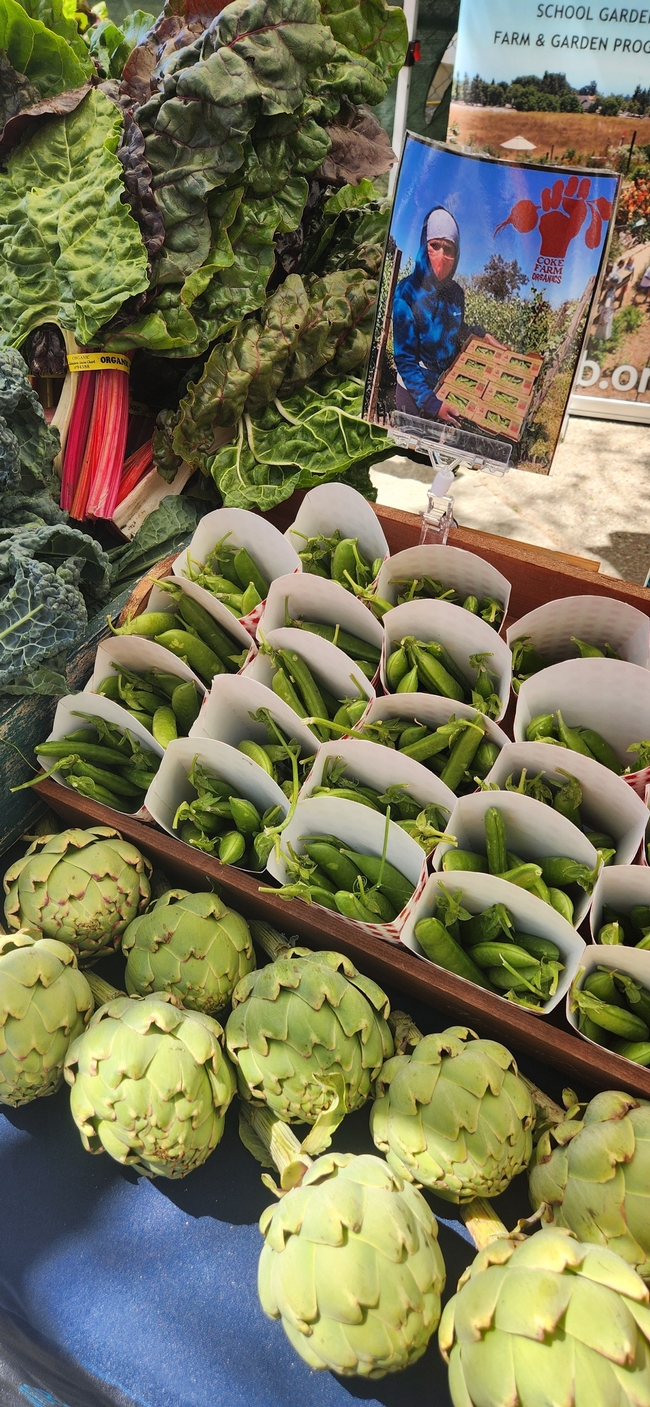
While existing research shows that kids who engage with farm-to-school programs eat more fruits and vegetables, are more willing to try healthy foods, and even perform better in class, the California farm-to-school evaluation project examines a gap that most farm-to-school research hasn't addressed: how local purchases from schools affect the agricultural sector and the environment.
The report found that the investments are flowing primarily to the farmers the state seeks to support through this program: Of the 50 producer grantees evaluated in this report, 42% are owned by people who identify as Black, Indigenous and People of Color, and 62% are owned by women. Nearly all (94%) are small to midsize operations.
Three producer grantees revealed that the Farm to School Incubator Grant Program funding likely prevented them from going out of business. “This grant … has and will enable us to do things on the farm that would probably take us a decade to do but we'll be able to do that in one or two seasons. So [it] really moves us forward a lot,” noted one farmer.
Beth Katz, a lead researcher and executive director of Food Insight Group, said, “Farmers are expanding their relationships with local school districts, increasing their sales to schools, investing in infrastructure and staff, and forming new relationships with food hubs that can help them with the often complex purchasing requirements unique to school food. While we're still at a very early stage of understanding the impacts of these investments, we're beginning to see patterns emerge.”
A Humboldt County farmer noted that food hubs, which are also supported by the grant program, are critical to their success in accessing the school food market: “[The food hub] is really a huge game changer to be able to make that one drop in town, even though it's an hour away, rather than going to [several school sites] and just making all these little drops. That's been one of the ways that it's very . . .appealing to us as a farm to participate.”
The report also examines the potential for environmental impacts through direct investments in farmers who use climate-friendly farming practices.
“I'm inspired by the potential for the farm-to-school program to support farmers using environmentally beneficial practices like reducing pesticides, planting cover crops and growing organic — and to help farmers expand or adopt these practices. It's essential these farmers have a market for what they grow to see durable environmental benefits,” said Tim Bowles, who is leading the environmental impacts assessment for the evaluation team and is an assistant professor in the Department of Environmental Science, Policy & Management at UC Berkeley and lead faculty director of the Berkeley Food Institute.
“We're also seeing farms actually expand their acreage in order to sell to schools, suggesting this is a desirable market. We're investigating the environmental impacts from these investments, especially for climate,” Bowles said.
As with many new programs aimed at building out long-delayed infrastructure, school food systems improvement demands a deep-rooted approach.
“The challenges around changing a complex school food system are substantial,” Gail Feenstra, a pioneer in farm-to-school research and co-lead on the project from UC ANR stated. “Decades of research shows the value to children from fresh, locally sourced food. However, what is becoming more clear from this research is that long-term investments in the full farm to school system are crucial. Without regional-level infrastructure, staffing, aggregation and distribution in place to support getting that locally grown food from farms to the schools and kids, we'll have challenges moving the needle.
"Fortunately, the state's strategic and innovative investments in the entire farm to school supply chain – meaning funding for school districts, farmers and also their regional partners, combined with support from CDFA's regional staff – are beginning to address those long-standing challenges.”
UC offers resources for urban farmers at EcoFarm
University of California scientists will be participating in the 44th Annual EcoFarm Conference Jan. 17-20 in Pacific Grove. EcoFarm participants gather to celebrate and learn about advances in farming and food systems throughout the state. This year, the three-day conference will highlight Black, Indigenous and People of Color communities that depend on agriculture, while also showcasing the new technological advances that further the development of agriculture.
Researchers from the UC Davis Veterinary Teaching Hospital's Department of Population Health, the Western Institute of Food Safety and Security and UC Agriculture and Natural Resources will be attending the conference to highlight the importance of food safety and technical skills in urban farming.
At EcoFarm, the Western Institute of Food Safety and Security will showcase its Civic Urban Farmer Program with an exhibit. The program, led by UC Davis assistant project scientist Sara Garcia and supported by UC Cooperative Extension, strives to uplift BIPOC communities.
The Civic Urban Farmer Program
The Civic Urban Farmer Program – a no-cost, 11-week program for farmers in the Sacramento region and Bay Area – provides technical support for new and upcoming urban farmers through webinars and in-person events. The program is available for any race, gender, age and skill ability, and seeks to provide safe, expert advice for farmers at any scale.
Soil health, composting, pest management, business marketing, food safety and urban policy are among the topics covered in its lecture-style classes.
Earlier this year, the program graduated its second cohort, with the support of two nonprofit organizations, Three Sisters Gardens in West Sacramento and Common Vision in Oakland. The program is supported by industry professionals, researchers and government officials, as well as local nonprofit and non-governmental organizations.
Elina Niño, UC Cooperative Extension specialist in apiculture, joined the Civic Urban Farmer Program to support urban farmers with training on managing pollinators to increase crop yields and create value-added products such as honey. The success of the pollinator program revealed that small urban farmers desire resources and education that are tailored specifically toward the cultivation of healthy and safe food.
For more information about the Civic Urban Farmer Program, visit https://www.wifss.ucdavis.edu/urbanfarmers.
Organic Agriculture Institute
The UC Organic Agriculture Institute, led by UC Cooperative Extension specialist Houston Wilson, will have an exhibit at EcoFarm. UC Organic Agriculture Institute brings together growers, certifiers, consultants, community groups and other stakeholders with UC research and extension personnel to share information about organic farming.
For more information about the UC Organic Agriculture Institute, visit https://organic.ucanr.edu.
Workshop speakers
Several UC Cooperative Extension advisors will be speaking at EcoFarm, including Richard Smith, UCCE emeritus vegetable crops advisor; Patricia Lazicki, UCCE vegetable crops advisor; and Margaret Lloyd, UCCE small farms advisor.
Connect with @ucanr on X, Instagram and LinkedIn.
UCCE small farms advisor strives to make farming more inclusive and equitable
This is one of a series of stories featuring a sampling of UC ANR academics whose work exemplifies the public value UC ANR brings to California.
The coronavirus pandemic has disrupted life for everyone, with information about COVID-19 changing daily. For Californians who aren't fluent in English, obtaining reliable information is particularly difficult. Aparna Gazula, a University of California Cooperative Extension advisor who serves Santa Clara, San Benito and Santa Cruz counties, has been providing COVID-19-related information in Chinese and Spanish for immigrant Bay Area farmers.
In March, when restaurants shut down to curb the spread of the virus, many restaurants and wholesale produce markets cancelled produce orders placed with farmers. Language, cultural differences, low computer literacy and limited access to computers created barriers for small-scale, immigrant farmers in the Bay Area to quickly find new buyers for their perishable produce. Gazula introduced them to food banks, hoping they would accept the produce donations, but the food banks were not set up to pick up donations from small farmers.
Most small-scale farmers lack the financial capital to absorb the revenue shock. To help offset losses from unsold specialty crops, the UCCE advisor and Qi Zhou, the small farm program assistant specialist, have been helping Asian and Latino farmers complete English-language disaster aid applications.
“Since March, we have helped farmers apply for Covid-19-related farmer relief funds,” Gazula said. So far, she said, four of the 17 immigrant farmers who applied to the American Farmland Trust Farmer Relief Fund have received a total of $4,000, and 10 farmers of the 30 who applied to the California Family Farmer Emergency Fund received a total of $42,500.
Recently the U.S. Department of Agriculture expanded the list of specialty crops eligible for its Coronavirus Food Assistance Program to include bok choy, daikon and other vegetables with a deadline of Sept. 11. Communicating by phone and the app We Chat, Gazula and Zhou, who speaks Mandarin, notified local farmers, and advised them how to apply for the disaster funds. Zhou, USDA Natural Resources Conservation Service rangeland management specialist Ling He and another NRCS staff member assisted 64 farmers in completing applications over the past week.
Bob Kuang, president of the Bay Area Chinese Growers Association, shares UCCE information with the association's growers.
“Most of my members don't understand English so they [UC Cooperative Extension] help, like for policy and safety,” Kuang said, "providing information the growers can't find elsewhere in Chinese.”
When she was a girl, Gazula saw how hard farmers work to make a living off the land while spending summers and winter breaks at her grandparents' farm in India, where they grew rice, mung beans and chili peppers.
“Farmers are very hardworking people, and small farmers even more so as they manage everything on the farm,” said the small farms and specialty crops advisor. “Their grit, determination to succeed and hardworking spirit truly inspire me.”
“I'd like to help them be successful as much as I can,” she said, “be it research-based information to farm successfully or bilingual support to help them better navigate regulations or apply for grant funds.”
In addition to helping farmers apply for financial relief, Gazula alerted the farmers to shelter in place rules and is delivering COVID-19 safety information about masks, sanitation and social distancing requirements in Chinese and Spanish to them.
“We also helped farmers implement COVID-19-related protocols on their farms,” she said. “We are currently putting together 200 COVID-19 kits that will help farmers comply with worker health and safety-related protocols on their farms. The COVID-19 kits contain reusable masks, hand sanitizer, bilingual Cal OSHA guidelines for employers regarding COVID-19, and a resources sheet listing where to buy the enclosed items.”
When she's not involved in COVID-19 crisis communications, Gazula continues to conduct research on nitrogen uptake in bok choy and bell peppers and irrigation management. She collaborates with Linda Chu, Guo Ping Yuan, Han Qiang Kuang and other Santa Clara County growers who allow the farm advisor to study crops on their farms.
“They do research, like test irrigation systems for right amount of water for the crop and nutrition – fertilizer – for the crop. They do lot of things,” said Kuang, of the Bay Area Chinese Growers Association, who provides land at his farm in Gilroy for UCCE studies.
Gazula also advises farmers on how to implement the Food Safety Modernization Act (FSMA) on their farms and fulfill irrigated land nitrogen reporting. Fines for not complying with regulations can threaten the economic sustainability of small family farms.
Although the majority of growers she works with regularly have limited English and need assistance filing reports to the government, others consult her for production information they can't get elsewhere for the specialty crops they grow. Farmers of Korean, Japanese, Indian and Vietnamese ancestry and others attend meetings to learn the latest research on Asian vegetables such as daikon radish, napa cabbage, bok choy, on choy and various Asian leafy mustard crops including gai choy and pea shoots.
Gazula, who joined UC Cooperative Extension in 2016, currently works with about 180 small-scale growers in San Benito and Santa Clara counties and hopes to expand her outreach to farmers in Santa Cruz County.
To help small farmers adapt to climate change, Gazula and Zhou partnered with UC Agriculture and Natural Resources' Healthy Soils Program staff and Santa Clara County Farm Bureau for technical assistance and held workshops during the winter. Zhou helped the farmers apply for grants from the California Department of Food and Agriculture's State Water Efficiency & Enhancement Program and Healthy Soils Program. The 22 farmers who received CDFA grants brought a total of $424,111 into Santa Clara County.
The outreach work UC Cooperative Extension does wouldn't be possible without the help of bilingual staff such as Zhou, the scientist Gazula hired with grant funds in September, and some translation support from partner organizations and growers as well.
“Relying on partners for translation support isn't practical,” Gazula explained. “Outreach is most effective when it is targeted. It's not just literally translating words, but translating the information the words convey. Because we provide outreach materials to comply with regulations, the language in these materials is very technical and it's important that the information is presented accurately. We also depend on relationships with the farmers to extend the information within their communities. Long-term, it's easier to do outreach with support from our own staff.”
Competition is stiff for money to serve non-English-speaking Californians because the state is home to so many immigrants with different needs. The majority of the grants she uses for outreach are for food safety. The local Open Space Authority, which promotes preserving land for open spaces, has also provided funds for small and beginning farmer outreach and education.
Gazula draws on the expertise of fellow UC Cooperative Extension farm advisors across the state. For example, she said, Richard Smith, who specializes in vegetable production, and Michael Cahn, who specializes in irrigation and water resources, are always willing to help, even though they are not assigned to serve Santa Clara County.
“Farmers already have tremendous challenges when it comes to being successful,” Gazula said. “I feel language barriers and lack of access to the same resources as fluent English-speaking growers shouldn't be the reason they can't farm successfully.”
Healthy Animals, Healthy People Survey
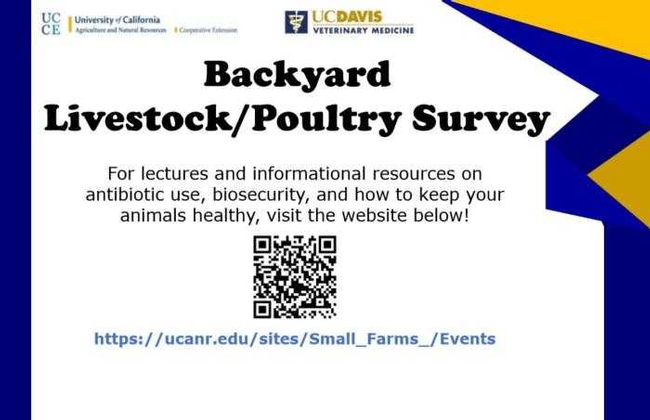
Conducted by the University of California Cooperative Extension and the School of Veterinary Medicine and funded by the California Department of Food and Agriculture, this survey will take about 20 minutes to complete. Provided information will be kept strictly confidential. We will not connect your name with your responses.
Originally created as part of the Healthy Animals, Healthy People workshop series in California, the survey is now open to all owners and small-scale producers of livestock and poultry in California regardless of workshop attendance. We would appreciate your time and participation in this survey, accessible here.
Barn Owls: Biological Control
I usually enjoy life and growing things as a farmer, however I was excited in the recent weeks to see the remains of something most definitely dead; owl pellets under an artificial nesting site. After a couple barn owl boxes were installed last year, I have eagerly awaited their occupation. Did you know that a family of barn owls will eat about 1,000 rodents in a single nesting season?
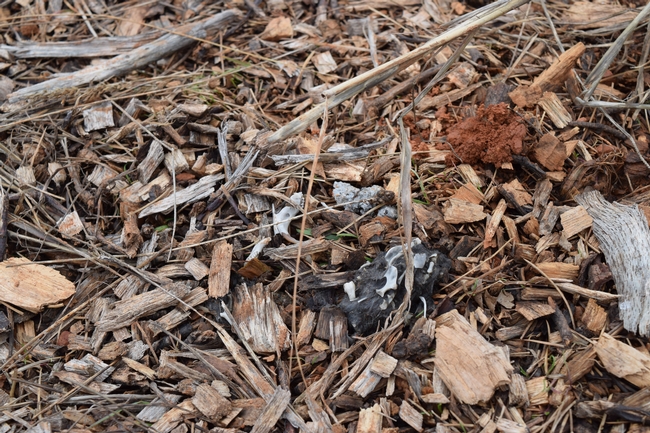

The recent owl pellet observation sparked my interest in researching the benefits of barn owls in agriculture. I found lots of information but focused on a particularly good peer-reviewed article called Agriculture land use, barn owl diet, and vertebrate pest control implications. (Kross, 2016). I will share with you the highlights, but you might want to read the research report yourself.
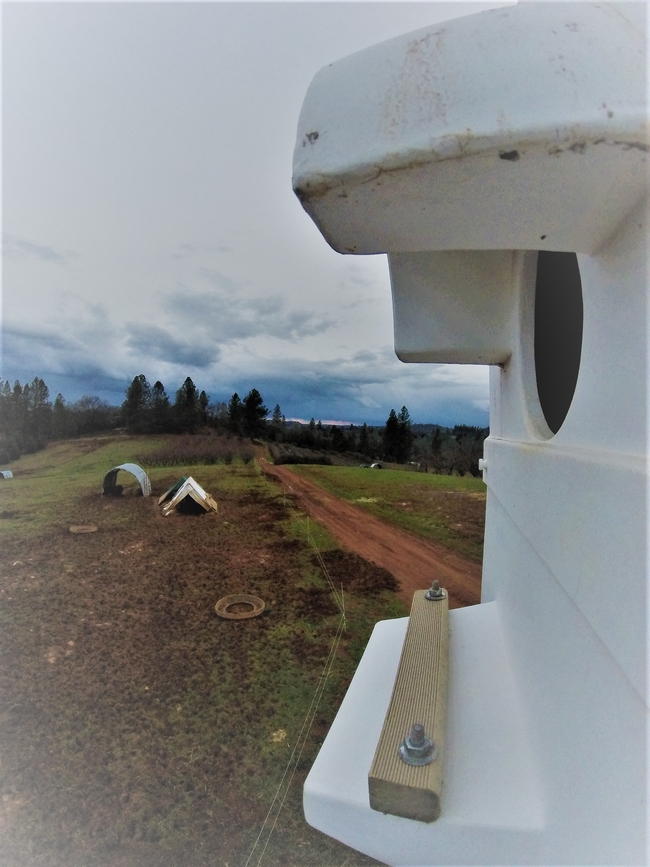

Research of owl presence at 25 California nesting boxes located mainly on row crops and perennial crops and forage, identified 1044 prey species. Pocket gophers, mice, and voles are generally the most important parts of the barn owl diet. Gopher numbers were highest in owl pellets found near perennial cropping systems but still a significant part of pellets found in annual cropping systems. Although mice are often considered less important as pests than gophers, they can carry pathogens that are a food-safety risk. 99.5% of prey items studied were agriculture pests, therefore owls are likely to provide valuable pest control services for farmers in our area if owl populations are fostered. Barn owls can persist if nesting sites and prey are available. Farmers seem to help provide the rodents, but let's not forget the nesting sites!
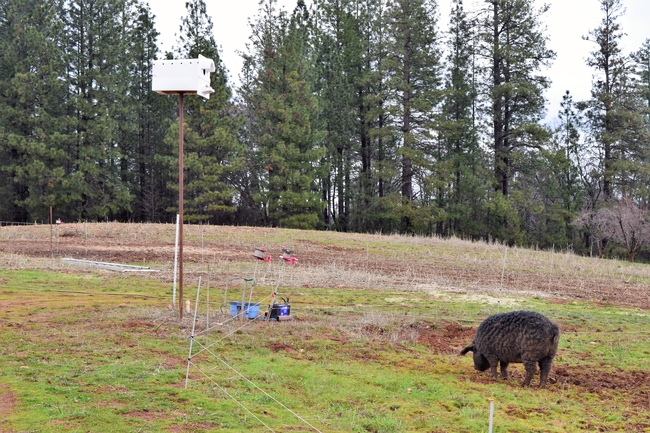
Alternative methods for rodent control such as trapping and poisoning can be expensive, labor intensive, and impact non-target species. Installation of nesting boxes to attract barn owls is not a proven method for sustained rodent control in agriculture systems by itself, rather it is best included as a component in an integrated pest management plan. Availability of nests sites appears to be the limiting factor of barn owl population growth in habitats that interface with humans (i.e. Farms and Ranches). Barn owls in the studied area occupied over half of the artificial nesting sites available to them, so installing nest boxes on farms may increase the natural barn owl rodent control.
Take away:
Farmers and ranchers who wish to utilize the low-cost natural predation of rodent pests by barn owls in their agriculture systems or simply attract owls should:
- Provide abundant nest sites, including nest boxes. Funding and plans may be found through contacting your local resource conservation district.
- Increase crop type diversity in proximity to nest sites to include both perennial and annual systems to increase owl hunting efficiency.
- Install nest boxes now for this spring nesting season for best chance of owl occupation in the next 6 months.
Resources:
Read the research article discussed above:
Kross S., Bourbour R., & Mertinico B. 2016. Agriculture land use, barn owl diet, and vertebrate pest control implications. Agriculture Ecosystems and Environment. 223, 167-174. http://sarakross.weebly.com/uploads/8/6/7/7/8677631/kross_bourbour___martinico_2016.pdf
NRCS Barn Owl Information Sheet and Owl box plans https://www.nrcs.usda.gov/Internet/FSE_DOCUMENTS/nrcs144p2_063925.pdf
UC Master Gardener Gopher Blog post, ideas for gopher management with great photos https://ucanr.edu/blogs/blogcore/postdetail.cfm?postnum=29485
UCANR Songbird, Bat, and Owl Houses https://anrcatalog.ucanr.edu/Details.aspx?itemNo=21636 This handy guide explores the benefits of the biodiversity and aesthetics of songbirds, bats, and owls. While written with vineyard managers in mind, anyone interested in learning about nest boxes will find this guide useful. Purchase this booklet at the link above for $15.

